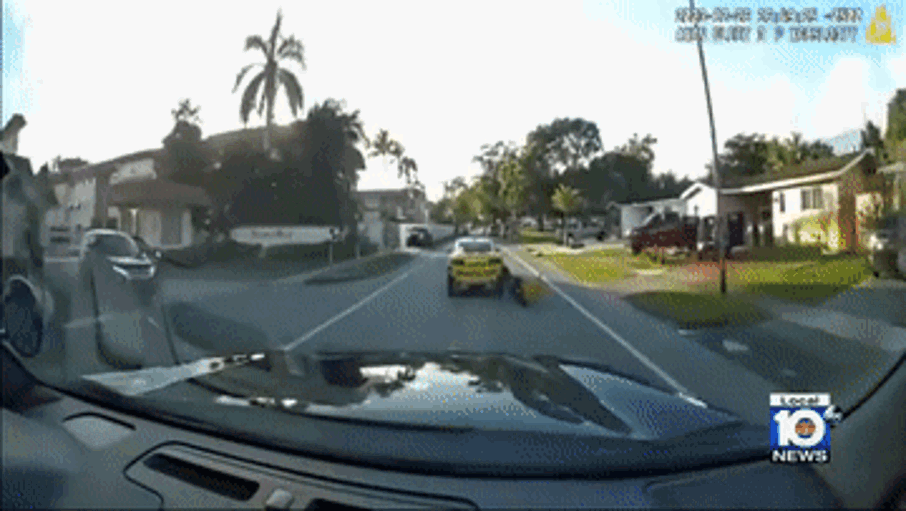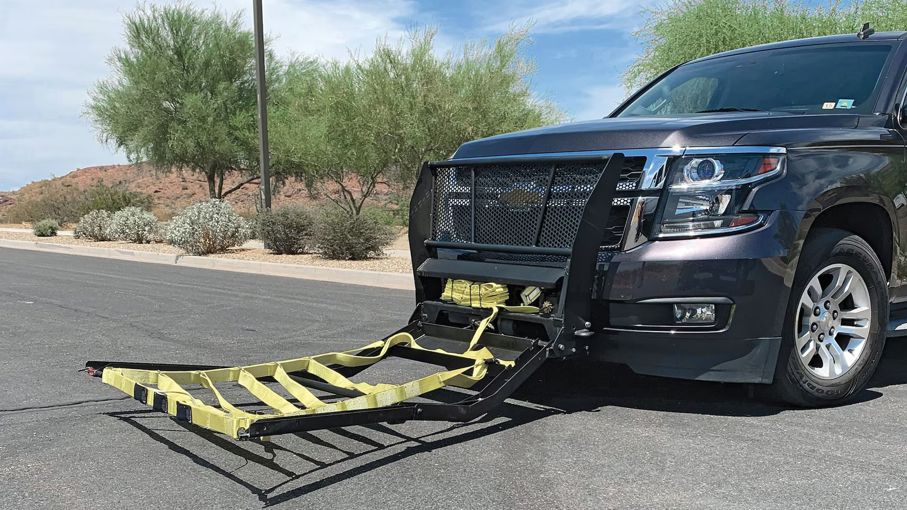In a remarkable incident in Hollywood, Florida, local law enforcement demonstrated a nifty approach to ending high-speed chases, showcasing the effectiveness of a device called 'The Grappler'.
This cutting-edge technology, a netting apparatus mounted on the front of police vehicles, is designed to safely and efficiently halt fleeing vehicles, presenting an alternative to traditional and often hazardous pursuit methods like the PIT maneuver.
'The Grappler' in action

On 26 December of last year, Hollywood police officers employed The Grappler during a pursuit involving a Chevrolet Camaro, allegedly stolen by two 17-year-old suspects in a carjacking.
The suspects reportedly brandished a firearm to steal the vehicle while the owner was loading groceries.
The pursuit, captured on dashcam footage, culminated in a dramatic moment: The Grappler ensnared the Camaro's rear tyres, effectively halting the vehicle and ending the chase without casualties.
Before this, the suspects had lost control of the vehicle, crashing into a fence, which damaged the rear bumper and slowed them down.
A safer alternative

The Grappler represents a significant advancement in police technology, prioritising public safety during high-speed pursuits.
Latching onto a fleeing vehicle's tyre allows officers to stop the car remotely, minimising the risk of accidents or injuries.
The Hollywood Police Department, equipped with six grappler devices, demonstrated the practicality and safety of this innovative approach in real-world scenarios.
As police departments continue to adopt such technologies, the hope is for a marked reduction in the risks associated with high-speed chases, ensuring the safety of both the public and law enforcement officers.



